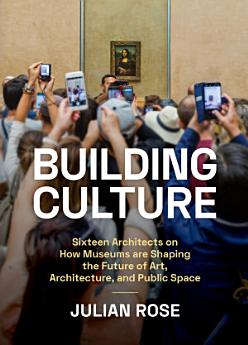Building Culture: How Museums are Shaping the Future of Art, Architecture, and Public Space
About this ebook
Architects and art lovers everywhere will enjoy this remarkable collection of interviews from sixteen of the world's most celebrated, thoughtful, and innovative architects who have designed many of the world’s greatest museums. Spanning generations, geographies, and methods of architectural practice, these architects share the complex and fascinating process of creating spaces for art. Building Culture includes interviews with:
- Frank Gehry, who reveals how a half-century of dialogue with the visual arts influenced his revolutionary Guggenheim Bilbao.
- Kulapat Yantrasast, who describes his rethinking of exhibition design and how it expands the presentation of work in venerable institutions like the Metropolitan Museum of Art, where he is currently redesigning the galleries for the arts of Africa, Oceania, and the Americas.
- Walter Hood, whose long interest in improvisational techniques in music informed his design for outdoor performance spaces in the Oakland Museum.
- Elizabeth Diller, whose conception of the Shed in New York City's Hudson Yards was influenced by decades of work in conceptual and performance art.
- Esteemed architects who have designed, renovated, or created galleries for MoMA, the New Museum, and the American Museum of Natural History in New York; the National Gallery and the Tate Modern in London; the Pérez Art Museum Miami; the Centre Pompidou in Paris, the 21st Century Museum of Contemporary Art, Kanazawa in Japan; the Museum of West African Art (currently under construction) in Nigeria; and many others.
Ratings and reviews
- Flag inappropriate
About the author
Julian Rose regularly contributes articles to publications such as Artforum, Perspecta, and October. He was a Senior Editor at Artforum from 2012 to 2018 and is a cofounder of the design studio Formlessfinder, whose work was selected for inclusion in MoMA’s 2011 Young Architects Program, won the 2012 AIA NY New Practices Award, and was recognized with the 2020 Architecture League Prize. Rose has taught architectural design and history at Columbia University and Princeton University. He received his BA from Harvard University and his M.Arch. from Princeton University School of Architecture, and is currently completing a PhD in Art and Archaeology at Princeton University. He lives in New York City.
Yve-Alain Bois is a world-renowned expert on modern and contemporary art. He has curated and co-curated a number of influential exhibitions at museums across Europe and the United States and has published widely on major artists ranging from Matisse and Picasso to Mondrian and Ellsworth Kelly. He is professor emeritus of art history at the School of Historical Studies at the Institute for Advanced Study in Princeton, New Jersey.





